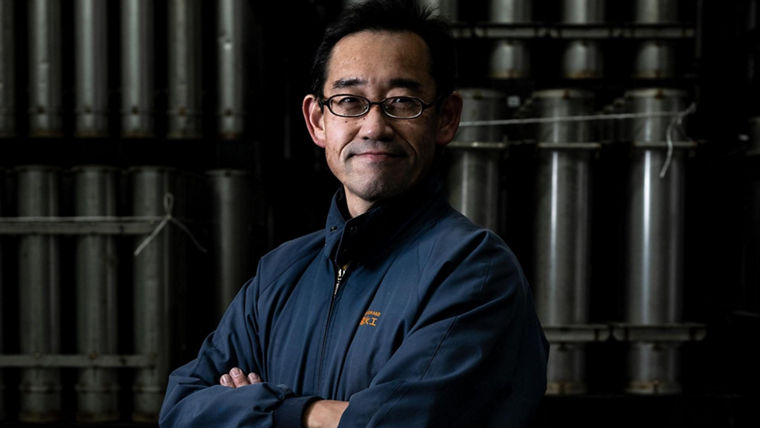I want my fireworks to be colorful—but that is not as easy as it sounds. Blue fireworks, especially, are very complicated to manufacture. We need to use copper, or to be more precise, cupric oxide. It is important that the temperature is not too high when the firework explodes as otherwise, the chemical reaction does not work. It must not be hotter than 1200 degrees Celsius; but in most cases, temperatures of 2000 degrees or more are generated. Also, the blue should not be too dark. It must be visible against the dark night sky. That’s why I’m always working to optimize the formulation for blue fireworks.
Whether it’s red, orange, gold, green or even blue: We need a range of chemical elements to produce our pyrotechnics. We use strontium to create red, barium to create green, and aluminum to create white. But these are not the only components. We need other substances to control the brightness and the combustion period. And what exactly these substances are, that’s our trade secret. Every manufacturer has his own unique formulation.
It has taken me many years to acquire the chemical knowledge that I need for my work. Fireworks are a tradition in my family: Our family business has been manufacturing pyrotechnics since 1909. I obtained a license to produce them when I was 18. To develop new formulations and to produce creative light effects and spectacular explosions, I need to know how the state of chemical elements can change. Chemistry is my passion!
Unfortunately, in many cases, you only find out if the effects are going to work when the explosion occurs. And that’s why I am always very nervous prior to big fireworks shows. Thousands of people stare into the sky, are in awe of the colorful formations that light up the night, and are often moved by the spectacle. We spend from three to six months working on new formulations and we make the fireworks and firecrackers all by hand. After just 30 minutes, it’s all over. Our work literally vanishes into thin air. For me, it’s always an indescribable feeling when the people clap and cheer after the final firework has exploded. The tension just melts away. I think this is my favorite moment.



